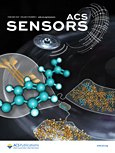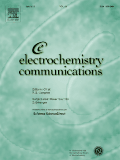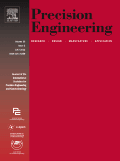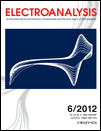
Sensors and Actuators Reports
Scope & Guideline
Empowering Collaboration Through High-Quality Findings
Introduction
Aims and Scopes
- Sensor Technology Development:
Research articles focused on the design, synthesis, and characterization of novel sensing materials and technologies, including electrochemical, optical, and gas sensors. - Biosensing Applications:
Studies exploring the use of sensors for biological applications, including disease detection, biomarker identification, and pathogen sensing. - Actuator Systems:
Investigations into various actuator technologies, including their design, functionality, and applications, particularly in robotics and environmental monitoring. - Environmental Monitoring:
Research aimed at developing sensors for detecting pollutants, toxins, and other environmental parameters, contributing to sustainability and public health. - Nanomaterials in Sensing:
Exploration of nanomaterials and their unique properties that enhance sensor performance, sensitivity, and selectivity in various applications. - Advanced Analytical Techniques:
Critical reviews and original research on analytical methods that support sensor functionality, including electrochemical impedance spectroscopy, surface plasmon resonance, and more.
Trending and Emerging
- Wearable and Portable Sensors:
A significant increase in research focused on wearable and portable sensing devices, particularly for health monitoring and diagnostics, showcases the demand for personal health technology. - Integration of Machine Learning:
The use of machine learning approaches to enhance sensor data analysis and interpretation is on the rise, facilitating smarter and more efficient sensing solutions. - Multi-Analyte Detection Systems:
There is a growing trend towards developing sensors capable of detecting multiple analytes simultaneously, which is essential for comprehensive health diagnostics and environmental monitoring. - Sustainable and Eco-Friendly Sensors:
Emerging interest in sensors that utilize environmentally friendly materials and processes reflects a broader commitment to sustainability within the field. - Nanotechnology and Advanced Materials:
The application of nanotechnology and advanced materials in sensor design is gaining momentum, leading to enhanced sensitivity, selectivity, and functionality in various sensing applications. - Real-Time and Point-of-Care Diagnostics:
Increasing research into real-time and point-of-care diagnostic solutions indicates a demand for rapid and accessible health monitoring tools, particularly in response to global health challenges.
Declining or Waning
- Traditional Chemical Sensors:
The focus on conventional chemical sensors has waned as newer, more sensitive technologies emerge, such as nanomaterials-based sensors that offer improved detection limits. - Basic Sensor Fabrication Techniques:
Research articles solely dedicated to basic sensor fabrication methods are becoming less common, as the field increasingly emphasizes innovative materials and hybrid systems. - Sensing in Non-Health Related Applications:
There has been a noticeable reduction in publications related to sensing applications outside of health and environmental monitoring, indicating a trend towards more impactful and relevant research areas. - Single-Use Sensors:
The interest in disposable and single-use sensors is declining, likely due to the rising demand for reusable and sustainable sensing technologies. - Low-Resolution Sensing Technologies:
The publication of studies focused on low-resolution or less sophisticated sensing technologies has decreased, as the field moves towards high-resolution and more complex systems.
Similar Journals

SENSORS
Shaping the future of analytical and engineering solutions.SENSORS is a leading peer-reviewed open-access journal published by MDPI, dedicated to the field of sensor technology and its applications. Established in 2001 and located in Basel, Switzerland, this journal plays a pivotal role in disseminating groundbreaking research encompassing various disciplines, including Analytical Chemistry, Physics, Engineering, and Biochemistry. With a distinguished 2023 Scopus ranking that places it in Q1 across multiple categories and a commendable impact factor reflective of its high-quality contributions, SENSORS has cemented its status as an essential resource for researchers and professionals alike. The journal is committed to facilitating knowledge exchange in cutting-edge sensor technologies, fostering advancement in areas such as instrumentation, medical applications, and electronic engineering. The convenient open-access model ensures that research findings are readily accessible to a global audience, promoting collaboration and innovation within the scientific community. For all those interested in probing the depths of this dynamic field, SENSORS provides a rich repository of research that not only informs but inspires future explorations.

ChemNanoMat
Innovating Solutions for a Sustainable TomorrowChemNanoMat is a prestigious academic journal published by WILEY-V C H VERLAG GMBH, dedicated to the rapidly evolving fields of nanoscale materials and their applications in diverse areas such as biomaterials, energy engineering, and environmental sustainability. With the journal's ISSN 2199-692X and recognized quality, as evidenced by its Q2 rankings across multiple categories—including Biomaterials and Renewable Energy—ChemNanoMat serves as a crucial platform for researchers, professionals, and students to disseminate their findings and foster collaborations. Operating from Germany, the journal encourages the exploration of innovative materials solutions to meet tomorrow's challenges. While it does not currently offer open access options, it remains highly regarded in the academic community with a competitive impact factor that emphasizes its relevance and influence in guiding future research directions. Covering a broad scope from 2015 through 2024, ChemNanoMat is key for anyone invested in the advancement of materials chemistry and related scientific fields.

ACS Sensors
Pioneering research that transforms sensing technologies.ACS Sensors, published by the American Chemical Society, is a premier journal focusing on the rapidly evolving field of sensors and sensing technologies. With an ISSN of 2379-3694, it has established itself as a key resource for researchers and professionals in bioengineering, fluid flow, instrumentation, and process chemistry. The journal holds a remarkable Q1 ranking across multiple categories, indicating its influential position within the academic community, with Scopus rankings placing it in the top echelons of its fields. Since its inception in 2016, ACS Sensors has provided high-quality, peer-reviewed research that drives innovation and application in sensor technology. The journal encourages submissions of original research articles, reviews, and technical notes that advance the understanding of sensing systems, showcasing novel methodologies and applications. While currently operating under a subscription model, the journal is committed to enhancing accessibility to cutting-edge discoveries. By fostering a collaborative environment for scientists and engineers, ACS Sensors is vital in bridging the gap between theory and practical applications, making it an essential read for those engaged in sensor development and application across various disciplines.

ELECTROCHEMISTRY COMMUNICATIONS
Empowering Researchers with Cutting-Edge Electrochemical KnowledgeELECTROCHEMISTRY COMMUNICATIONS, published by ELSEVIER SCIENCE INC, is a leading journal in the field of electrochemistry, holding a prestigious position in the Q1 quartile since 2023. With an impact factor reflecting its esteemed reputation, the journal ranks #15 out of 60 in the Scopus Chemistry category for Electrochemistry, placing it in the 75th percentile. Since adopting an Open Access model in 2019, it has garnered widespread visibility and accessibility, enabling researchers and professionals to share groundbreaking findings and foster innovation. Covering a wide range of topics from fundamental electrochemical research to practical applications, ELECTROCHEMISTRY COMMUNICATIONS serves as a critical platform for disseminating knowledge and advancing the field. The journal's commitment to quality and relevance positions it as a vital resource for academics and practitioners striving to stay at the forefront of electrochemical science.

Chemosensors
Exploring Innovations in Sensor TechnologyChemosensors is a distinguished open-access journal published by MDPI, focusing on the innovative field of analytical chemistry and physical and theoretical chemistry. Since its inception in 2013, the journal has rapidly established itself as a pivotal platform for the dissemination of cutting-edge research related to the development and application of chemical sensors, encompassing various methodologies and technologies that contribute to advancements in diagnostics, environmental monitoring, and industrial applications. Based in Switzerland, the journal operates with a commitment to accessibility, ensuring that all published articles are freely available to a global readership. With a current impact factor that positions it in the Q2 quartile for both Analytical Chemistry and Physical and Theoretical Chemistry, Chemosensors attracts a diverse audience of researchers, professionals, and students eager to explore new findings and foster collaborative efforts in sensor technology and its applications. As it continues to grow, Chemosensors remains devoted to advancing scientific knowledge and innovation in its field, making significant contributions to the global scientific community through its rigorous peer-review process.

International Journal of Electrochemistry
Exploring the synergy of science and innovation in electrochemistry.The International Journal of Electrochemistry, published by HINDAWI LTD, serves as a premier outlet for cutting-edge research in the expansive field of electrochemistry. With an ISSN of 2090-3529 and an E-ISSN of 2090-3537, this open-access journal has been contributing to the advancement of scientific knowledge since 2011, making its content freely available to researchers, industry professionals, and students around the globe. The journal aims to foster innovation by disseminating high-quality research articles, reviews, and technical notes that encompass a wide range of topics from fundamental electrochemical principles to practical applications in energy storage, sensors, and material development. With a focus on promoting interdisciplinary collaboration and advancing the understanding of electrochemical systems, the International Journal of Electrochemistry is a vital resource for anyone involved in electrochemical research and its applications.

PRECISION ENGINEERING-JOURNAL OF THE INTERNATIONAL SOCIETIES FOR PRECISION ENGINEERING AND NANOTECHNOLOGY
Elevating Standards: Premier Research in Precision Engineering and NanotechnologyPRECISION ENGINEERING - JOURNAL OF THE INTERNATIONAL SOCIETIES FOR PRECISION ENGINEERING AND NANOTECHNOLOGY, published by Elsevier Science Inc, stands at the forefront of advancements in engineering and nanotechnology since its inception in 1979. With a commendable impact factor and a ranking of Q1 in Engineering and Q2 in Nanoscience and Nanotechnology, this journal offers a premier platform for disseminating cutting-edge research that merges precision engineering with nanotechnology innovations. Its Scopus ranking positions it within the top 13% of journals in general engineering, making it an essential resource for academics and industry professionals alike. Although it does not currently offer open access, the journal promotes high-quality, peer-reviewed research that is crucial for ongoing developments in the field. Researchers, professionals, and students dedicated to precision engineering and related disciplines will find this journal to be an invaluable repository of knowledge and ideas.

Analytical & Bioanalytical Electrochemistry
Advancing the Frontiers of Electrochemical ResearchAnalytical & Bioanalytical Electrochemistry is a pivotal journal dedicated to the advancement of research and innovation in the fields of analytical chemistry and electrochemistry. Published by the University of Tehran, Faculty of Chemistry, Center of Excellence in Electrochemistry, this journal has been contributing to the scientific community since its inception in 2009 and continues to be a critical platform through 2024. With an ISSN of 2008-4226, it focuses on a variety of topics including electrochemical sensors, bioanalytical techniques, and innovative methodologies in electrochemical analysis. Although it currently holds a Q4 quartile ranking in both analytical chemistry and electrochemistry categories, its unique insights and research findings are essential for advancing knowledge and fostering interdisciplinary collaboration within the scientific community. Researchers, professionals, and students engaged in these dynamic fields will find valuable resources and contribute to the ongoing discourse by publishing their work in this journal. We invite you to explore and engage with the diverse content that Analytical & Bioanalytical Electrochemistry offers to enhance your research and professional development.

Journal of Analysis and Testing
Advancing analytical excellence for a sustainable future.Journal of Analysis and Testing is a premier academic journal published by SPRINGER SINGAPORE PTE LTD, dedicated to advancing the fields of analytical and environmental chemistry. With ISSN 2096-241X and E-ISSN 2509-4696, the journal has established a significant presence since its inception in 2017, converging its focus until 2024. The journal's outstanding rankings in 2023, including Q1 quartile placements in Analytical Chemistry, Instrumentation, and Spectroscopy, underscore its pivotal role in disseminating high-quality research. Researchers can access cutting-edge studies that explore innovative testing methodologies, electrochemical analyses, and material evaluations, making it an essential resource for professionals and students alike. The Journal of Analysis and Testing not only celebrates advances in science and technology but also promotes interdisciplinary collaborations, ensuring widespread impact across analytical and environmental domains. As such, this journal plays a vital role in shaping the future of analytical practices and methodologies, positioning itself as a key conduit for knowledge exchange in the scholarly community.

ELECTROANALYSIS
Empowering Researchers with High-Impact Electroanalytical FindingsELECTROANALYSIS is a premier journal published by WILEY-V C H VERLAG GMBH that serves the dynamic field of analytical and electrochemistry. Established in 1989, this scholarly publication has successfully converged its focus to cover a wide array of topics including novel electrochemical methods, sensor technology, and environmental analysis, reflecting the latest advancements and trends in the field. With an impressive 2023 impact factor that places it in the Q2 quartile of Analytical Chemistry and Q3 quartile in Electrochemistry, the journal is recognized for its high-quality research and contributions. Its Scopus rankings further reinforce its credibility, standing at #46/156 in Analytical Chemistry and #26/60 in Electrochemistry. Although currently not offering Open Access, the journal remains a significant resource for researchers, professionals, and students keen to stay at the forefront of electroanalytical techniques. With a global readership, ELECTROANALYSIS continues to drive knowledge and innovation within the scientific community.